Hair Transplant Surgery: Inside the Procedure and Results
I never thought I’d be getting a hair transplant. But then came my 30s, and the realization that my once-thick pelt was thinning, fast. It happened around the same time as ailing knees, slower metabolism, eye bags, and two-day hangovers. So, as I contemplated just how gracefully I wanted to age, I figured that the hairline was something I could control—with a few measures, including a hair transplant. I’ll dive into my experience getting a hair transplant in Turkey, but first, here’s what led me to doing so. (Because I believe individual context is important when you learn about anyone getting a hair transplant.) Then, I’ll outline the process itself, and detail my ‘before’ and ‘after’ progress.
My specific experience with hair loss
Five years ago, at age 29, I cut my hair from shoulder length to a buzz. My barber said, “Whoa. You’ve lost a lot of hair. Like, a lot.” He was referring to the two massive bald spots on my head (which I lost in my mid-20s, as those are vitiligo-induced white spots which thinned and fell earlier than the rest). He was also referring to the fact that my long hair was largely covering up how thinned-out my crown had become, along with significant recession at the temples.
I was aware of the recession. And I already suspected the overall thinning, since long hair tends to showcase exactly how thin and recessed your mane has become. So I spent the next five years hovering between 1-4 inches of hair, never longer, never shorter. This length allowed me to mask the bald spots, to use thickening and volumizing products, and to wear my hair forward over the recession. But underneath all of that, I was extremely insecure about losing everything.
It’s my job to test grooming products. My hair is my canvas. And, like a lot of people, it’s a source of pride, too. I love switching a hairstyle to reflect whatever vibe I’m going for, in addition to changing it up for the sake of “grooming research.” Not that any guy needs to rationalize wanting to keep his hair. The real reason I wanted a transplant was that simple: I do not want to lose my hair, period. I envy those perfectly content with going or being bald. And as often as I tell guys to “simply embrace it,” because confidence is sexy or whatever, I never wanted to weigh that decision.
So I did everything I could to restore the density. (I’ve written about The Most Effective Methods to Regrow Thinning Hair, and I hope you’ll read that, too, before considering a hair transplant.) First was minoxidil and finasteride. The former helps increase blood flow and nutrient delivery, which revives dormant follicles and thickens hair. The latter halts the hormone byproduct which thins hair and suffocates follicles. Minoxidil works primarily for the crown, and finasteride works to stop overall loss, while especially stopping recession. I also did PRP, wherein your own plasma is shoot into your scalp to deliver growth factors to the follicles. Admittedly, I did see improvements after that, though perhaps assisted by the supplements.
Overall, everything worked to stop the recession and to thicken my existing hairs—both the density and the individual shaft thickness. My dermatologist estimates that, before then, I had lost about half the hairs on my crown and, while my hair was always extremely thick, it was still evidently thinner than the sides and back of my head. With those three main steps (the pills, potion, and plasma), along with being more cognizant about my health and hair care, I would posit that about 30 percent of what was lost soon returned. You have a window of time where the dormant follicles can still regrow “lost” hair on the crown, until they dry up and die entirely. Maybe 1-3 years, if you’re lucky. So, if your hair loss is recent, then quickly consult with your dermo, and get started on the right prescriptions. But remember, you can never revive anything that’s recessed; you can only restore crown loss and overall density/thickness. Because I had waited too long to revive the two bald spots (which had been bald for five years or so), they were never going to grow back.
I’ve continued using both minoxidil and finasteride daily, with no side effects (though you should monitor finasteride closely, because a small percentage of men experience sexual side effects).
Why I chose to get a hair transplant
Simply put, I knew that I could get a hair transplant to bring forward the recession, and to fill in the bald spots. Hair transplants are extremely affordable in Turkey, a few thousand bucks versus $15-20K in the U.S. or UK, not to mention the market is packed with world-class pros, since Turkey is one of the cosmetic capitals of the world. It’s supply-and-demand economics in the best way possible, making the effective procedure affordable, since no health insurance is ever gonna cover the procedure. Plus, hey, great excuse to visit Turkey. (Why not add it onto the end of a week in Istanbul or Cappadocia?)
Secondly, I knew that hair transplant technology is finally in a place where we can trust the results to look natural—and I mean very very natural. The devices they now use allow for fast recovery, next to no pain, perfect individual placement of each hair graft (so that it grows at a natural angle, instead of vertically, like the plugs of the ’90s). These modern implant pens also allow for natural density and spread of the hairs, granting fullness if you require it (the doctor will know how dense to make it, so that it looks uniform and natural with the rest of your hair).
This precision and customization means that, finally, hair transplants make sense across the board. We’re probably a decade or so shy of stem cell transplants, so until then… this is a fantastic (and lasting!) solution—because the hairs they transplant come from the back of your head, and those ones don’t fall out like the hairs that originate from the top of your head. So, if you are also diligent about minoxidil and finasteride (not required, but highly recommended), in order to preserve the rest of your (non-transplanted) hair then you could be looking at Pierce Brosnan levels well into your 60s or 70s.
Say it with me: Google, Google, Google. Look at the before-and-after results of different places. Find out how long they’ve been in the business. Get their quotes and estimates, to see if everything is consistent from one to the next.
I went with Serkan Aygin, M.D., in Istanbul. For one, the clinic showcased the kind of results I wanted. Secondly, he had just won the award of top hair transplant surgeon at the European Awards in Medicine (since his clinic is in the European side of Istanbul). The clinic offered good travel packages, which include a four-star hotel plus private transport to and from the airport, as well as to and from the hotel and clinic.
I also spoke with Aygin on my Hair Transplant 101 article, which you can read for more insight on the topic.
[COVID travel note: Turkey remains open to Americans. I live in Germany, but was assured that I could travel safely to Istanbul and find appropriate COVID safety measures along the way. Originally my appointment was set for March 2020, and got cancelled due to the onset of the pandemic. So I was eager and excited to finally get to it in late June, not to mention relieved to find the entire experience comfortable and low-stress.]
Where the transplanted hair comes from: Basically, you don’t lose the hairs on the sides and back of your head. So this is where they extract the grafts—the “donor area.” Still, they need to assess your hair “quality,” to see its thickness, and how many of the follicles are growing multiple hairs (they can grow one to four shafts). If your hair is thick, and if lots of the follicles are producing multiple shafts, then you’re in a very prime situation for a full-coverage transplant (depending on the amount of thinning and loss). They’ll start by using photos of you to determine your candidacy and to predict how many grafts they’ll take (and provide a cost estimate). But the amount of grafts will be confirmed onsite once you complete the thorough examination, the morning before the transplant.
No more scars: Modern transplant methods no longer take a strip of skin from the back of the head. In the past decade, this scarring method has been abandoned, and replaced with FUE technology—follicular unit extraction. The FUE pens are able to extract individual grafts, and later implant them at proper density, and at the correct 40-ish degree angle that makes hair transplants look natural. And, by extracting them uniformly around the donor area, it prevents scarring and leaves the back of the hair looking full and perfectly normal to the naked eye, once the hair grows back out. (Obviously you cannot regrow the hairs that have been extracted, since they now live and are growing on the top of the head.) But trust me, most of us have lots of hair to donate from the back of our head before anyone will be able to discern any difference.
Drawing the hairline, and counting the grafts: This is all preceded by onsite exams that determine where to draw your new hairline, and how many follicles they’ll extract. I got 3,000 extracted, and with the multiple shafts on some of them, that equaled roughly 7,500 hairs. The max in a session is in the 3,000-4,000 range, and some guys might require multiple sessions, depending on coverage needed. You might require two sessions to do this—and they might need to be done one year apart. But the doctor will likely know this before you sign up for anything. So, don’t worry, you won’t be surprised to learn on the day of the transplant that you’ll actually require a repeat visit. Still, many men opt for this, knowing they’ll need lots of rearrangements up top.
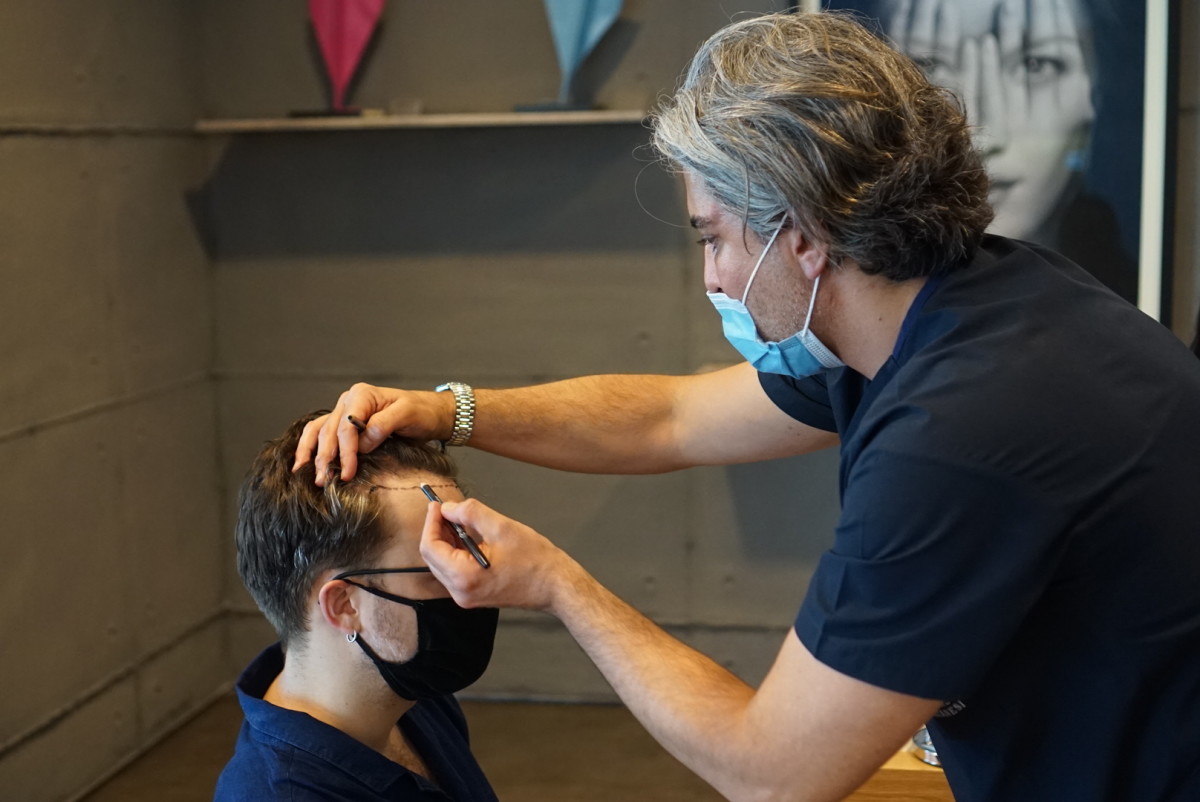
The buzz: They buzz you down, if necessary. The DHI method (if you’re using it) doesn’t require you to shave entirely, and rather only the donor area in the back of the head. (Don’t shave before you arrive, because the hair still needs to be a manageable length for their pens to extract and implant. They’ll shave you onsite.)
Anesthesia: Next, they administer the anesthesia, both an IV sedative and local injections around the head. This doesn’t hurt so much as it just feels funny and crunchy. But the IV sedative also helps with the initial numbing, so that the head injections don’t feel so tough. They don’t fully knock you out, in the event you need to communicate with them or use the restroom. But, for what it’s worth, I slept through the entire extraction process, then stayed mildly awake during the transplant itself.
After extraction: The medical team examines each hair follicle, and sorts them based on the number of hairs growing from each graft. This is so that they distribute them evenly around the head, instead of accidentally giving you a bunch of four-haired grafts on one side, and one-haired grafts on the other. (The extraction process takes about one and a half to three hours, again depending on the task at hand.) The sorting happens simultaneously, so then they flip you over and get started on implantation as soon as the extraction ends. This part took us about three hours for the 3,000 grafts. Honestly, because I was dozing in and out, it felt like 90 minutes. Toward the end, I really wanted it to be over, more so because I could feel them pressing on my head over and over, and was like “OK, enough”…. But not because of any pain or anything. At least it felt half as long as it actually was.
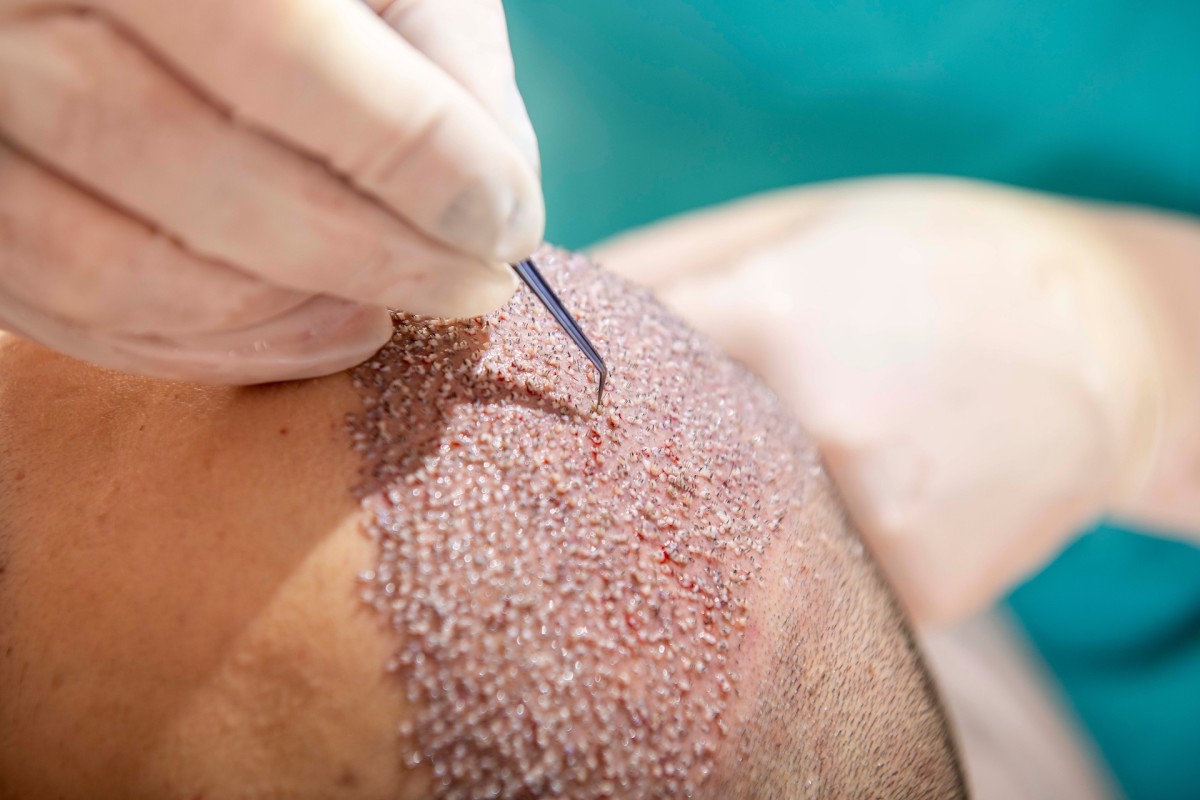
Painkillers and such: They give you the proper painkillers, antibiotics, and steroids to navigate the next week, and ingestion intervals/instructions for each. I only needed painkillers for the first night, and took them proactively. So, weirdly, I never felt any pain from the entire process, aside from the initial head injections, which themselves were mild. The steroids (four days) and antibiotics (five days) aren’t optional. You need to take them to keep swelling down, and of course to prevent infections.
Swelling: You need to sleep mostly upright to also keep the swelling down. Most patients will get a swelling band to wear for three days, which will contain any swelling to the top of the head. I didn’t get one, since we transplanted a few hairs on the upper sides of my hair, as well, where I had experienced mild recession. I fell asleep horizontally one night, accidentally, and the swelling sunk right down into my face. It was not cute. Any and all swelling goes away after four to five days.
Post-op care: The day after the procedure, you return to the clinic to take off the bandages, and to receive your ceremonious first wash. If you opt for it, they can also administer Low Level Laser Treatment, Mesotherapy (nutrient injections), or PRP (plasma injections) to stimulate growth and expedite healing.
On this day, the clinic will provide you with the proper shampoo and lotion to navigate the next few weeks, along with detailed instructions for care over the first two months. The short of it is this: For the first two weeks, you’ll use these special washes and lotions, and avoid touching the area while it scabs over. For the first month, you’ll avoid hot water, high water pressure, tight hats, haircuts, intense sweating and exercise, and towel pressure. For the first two months, you’ll avoid getting direct sun on the area.
The hairs fall out, as planned: After the first two weeks, the scabs should fall off naturally. And, most important to note, is the fact that the transplanted hairs will begin falling out with the scabs, and over the course of the first month. After a month, you can buzz down the remaining ones. Each of the transplants experiences “shock loss,” which is natural and expected as they adjust to their new environment. Speaking of shock, it’s a bit jarring as you notice five or six hairs on your fingers every time you touch your head, or when you notice tiny hairs on your keyboard over the span of a couple weeks. But this is a good sign. If you study the hairs, you’ll notice they don’t have a follicle at the end of them, because it’s sitting snug inside your skin. So, that follicle is now beginning its regrowth—the same as your other hairs, which experience their own growth cycles before falling and re-growing.
The regrowth phase: Within three or four months, you’ll see lots of sprouts coming up. By six to eight months, most of them will be growing through, perhaps a little thin yet. But by a year, you should be seeing the proper density and thickness that is your full result. In the first few months, you may experience numbness, itchiness, and redness on the scalp. This is to be expected, as everything recovers from such a rigorous procedure (despite being a fairly comfortable process overall).
Learn more: Again, you can read my Hair Transplant 101 article if you want to learn anything more on the matter.
Here’s a look at my own process, updated as it continues to grow. Please note that the transplant occurred in June 2020, which should mean that the hairs were growing out in the winter, and by now (spring 2021), I should have most of my results.
Content warning: This next section includes some mid- and post-surgical transplant images. Please only proceed if you aren’t queasy seeing this type of stuff.
—
Before Hair Transplant
As mentioned, I have thick hair and, despite having lost a lot of it, I am still able to use the right products and styling methods to keep hair looking full. (Also, I’m a grooming expert, and it’s kind of my job to know how to do all that.)
Most people I told about the hair transplant were surprised I was getting one, because they all thought I had plenty of hair. This is lots of smoke and mirrors, as you’ll see from the next shots, once they shave my hair down. I might have been a less obvious candidate to the naked eye, but I knew I would benefit from the procedure.

Preparing for the Procedure
I arrived the morning of my transplant, and met with Aygin and his team to assess the overall quality and density of my hair (both the donor and recipient areas). He traced the new hairline, and did so with the confidence of someone who has done it 10,000 times, which I guess isn’t a stretch. Aygin determined that my crown thickness was still dense enough that we shouldn’t add more, less the implanted hairs obstruct and kill off the already healthy follicles. So we focused all efforts on the recession and bald spots, and landed at the magic number of 3,000 grafts. (I would later learn that this was about 7,500 actual hairs, in the case of someone with ample, virile hair shafts like me. I’m so proud of my lil guys.)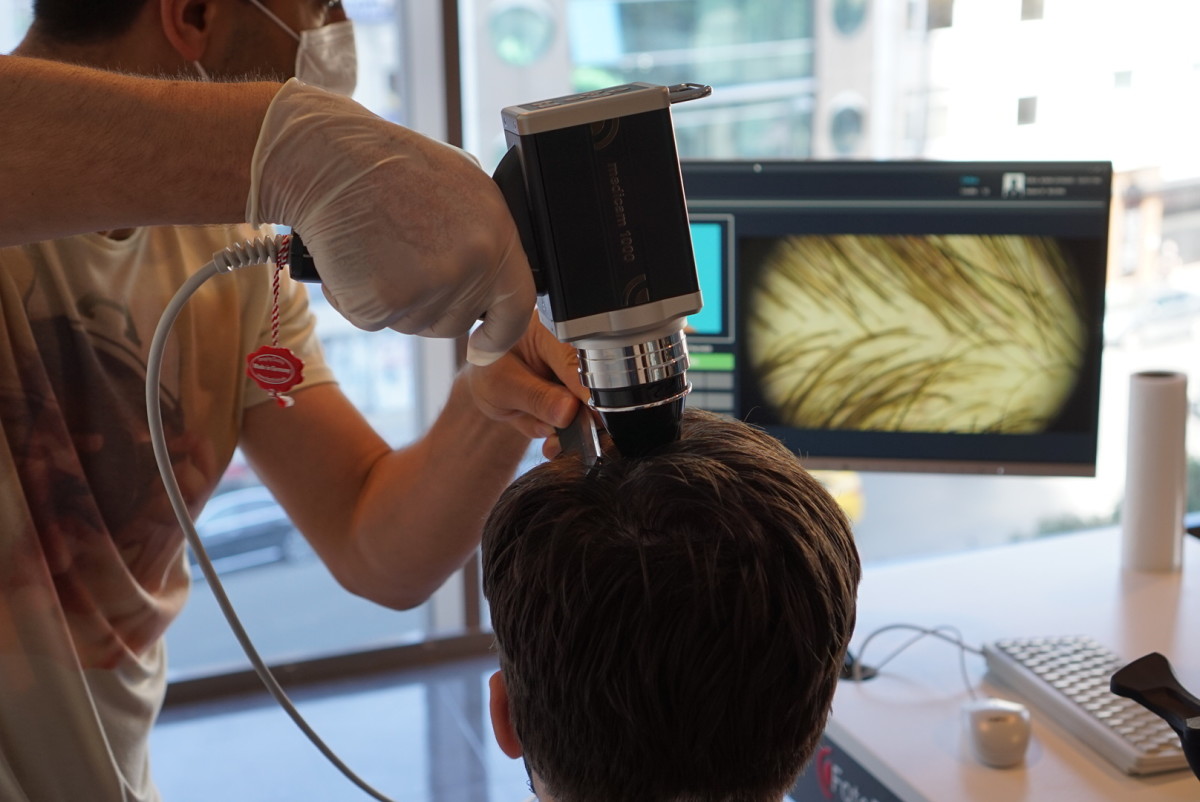
Then they shaved me down. I opted for the DHI transplant method, which doesn’t require shaving all over, but I still wanted to, for the sake of taking clear ‘before and after’ photos. (For you, my gift.)
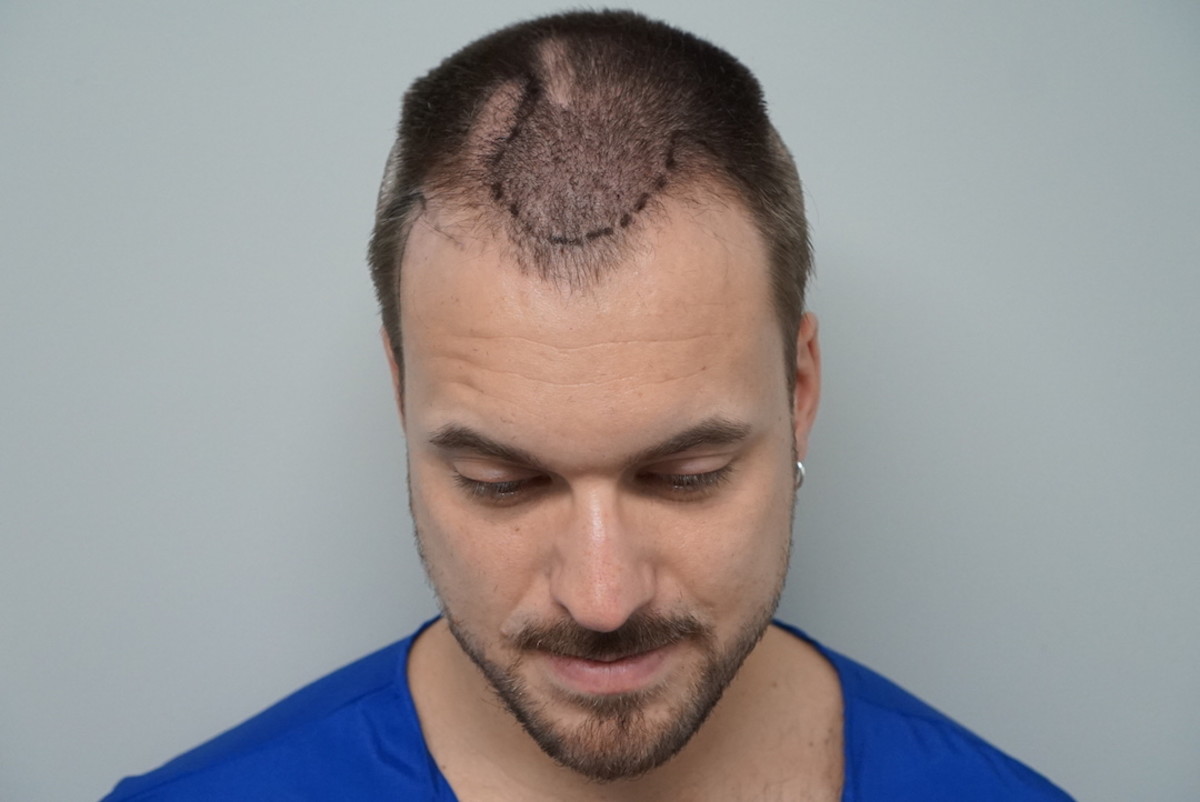
You can see exactly where they outlined my recipient area, across the front and on the bald spots. We would later redraw the hairline, right before the actual implanting.
The Procedure
I’m going to spare you the photos of the actual extraction and transplant, but here is one medical staff member carefully examining my extracted follicles, and counting the number of hairs on each graft. He sorts them so that they can be evenly distributed based on their proliferation.
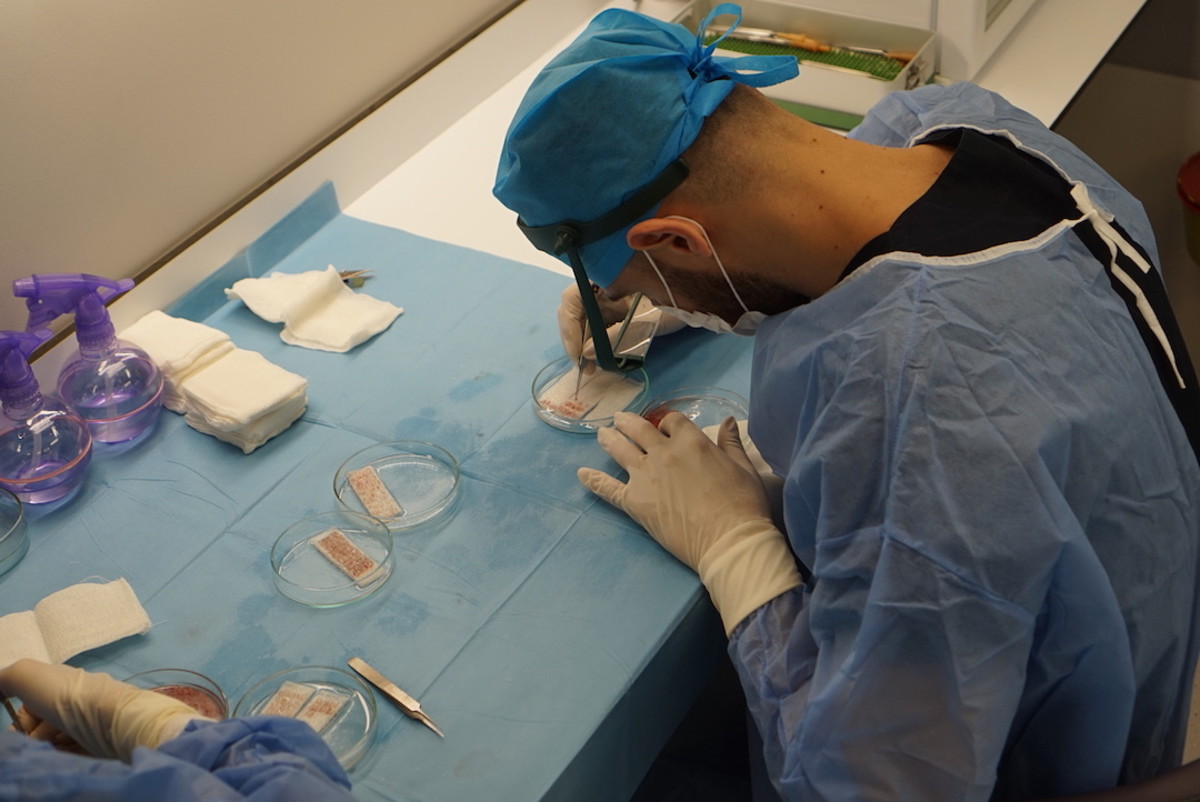
Between the extraction and the implantation, Aygin again draws the hairline. The team implants hairs along this line, with ever-so-slight inconsistencies along the way so that it looks natural upon regrowth (rather than a harsh, straight line).
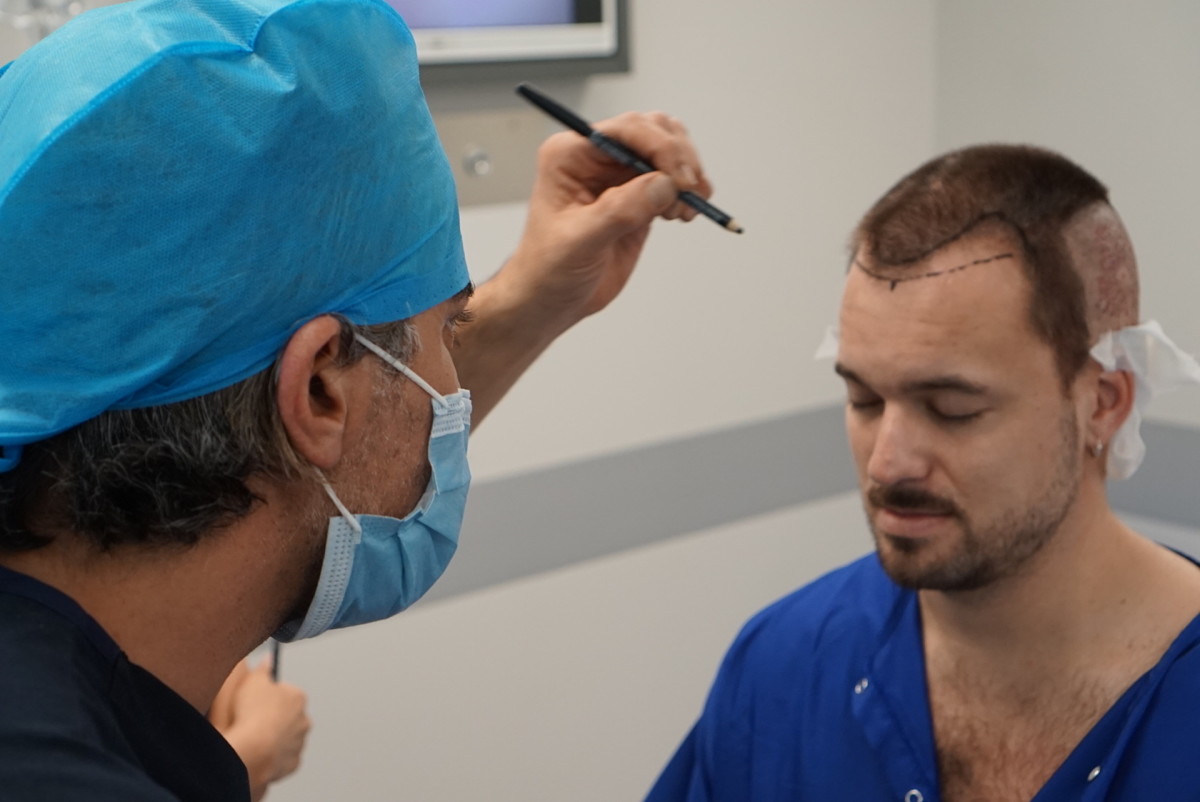
Here’s what it all looked like immediately after the procedure: 3,000 grafts, over the front of my head and across two bald spots. You keep the dressing on the rear for the first night, and they remove it the next morning while giving you the first wash and optional growth treatment.
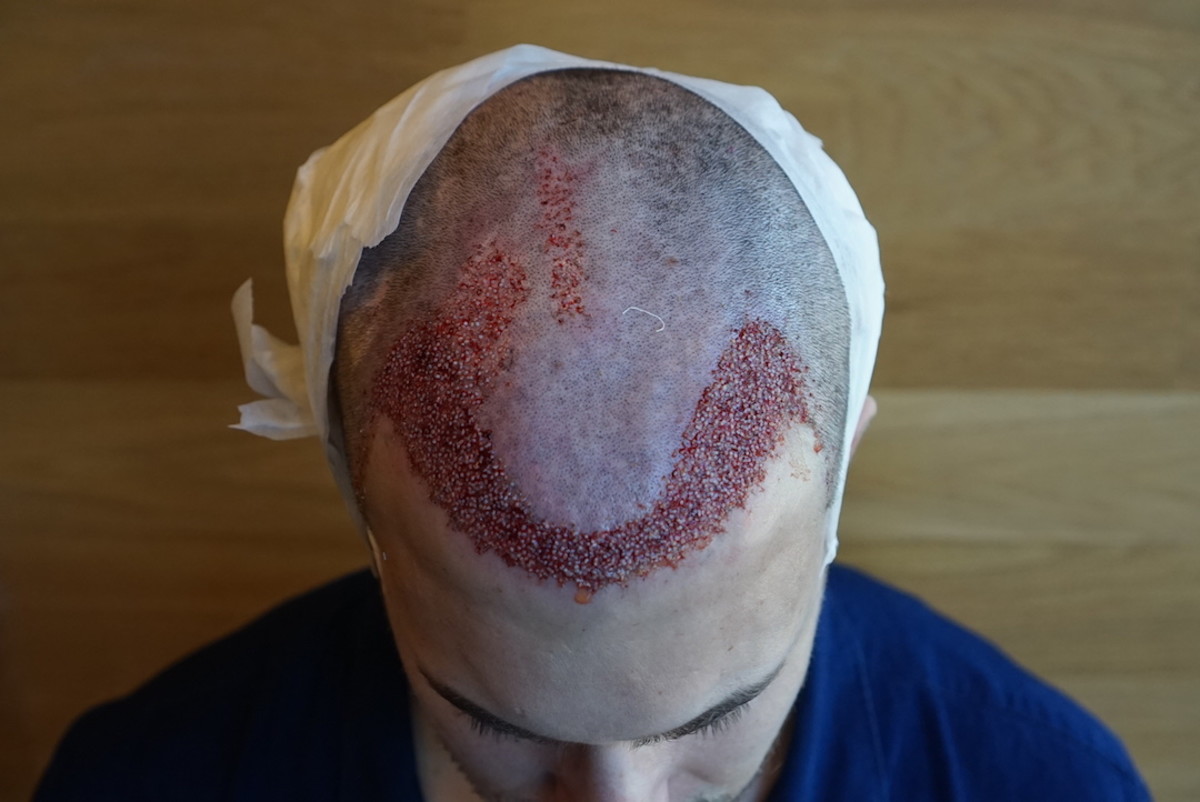
I got a fancy certificate the next day, certifying the amount of hairs that were implanted. It formalizes the procedure too, in case you experience anything unexpected and need a touch-up or something. It makes you feel like you graduated from Vanity School as well, so maybe you can send it to your mother to frame and hang on her wall. You can see my forehead is a little puffy, too, from the swelling. (Since I didn’t wear a swelling band, unlike most patients.)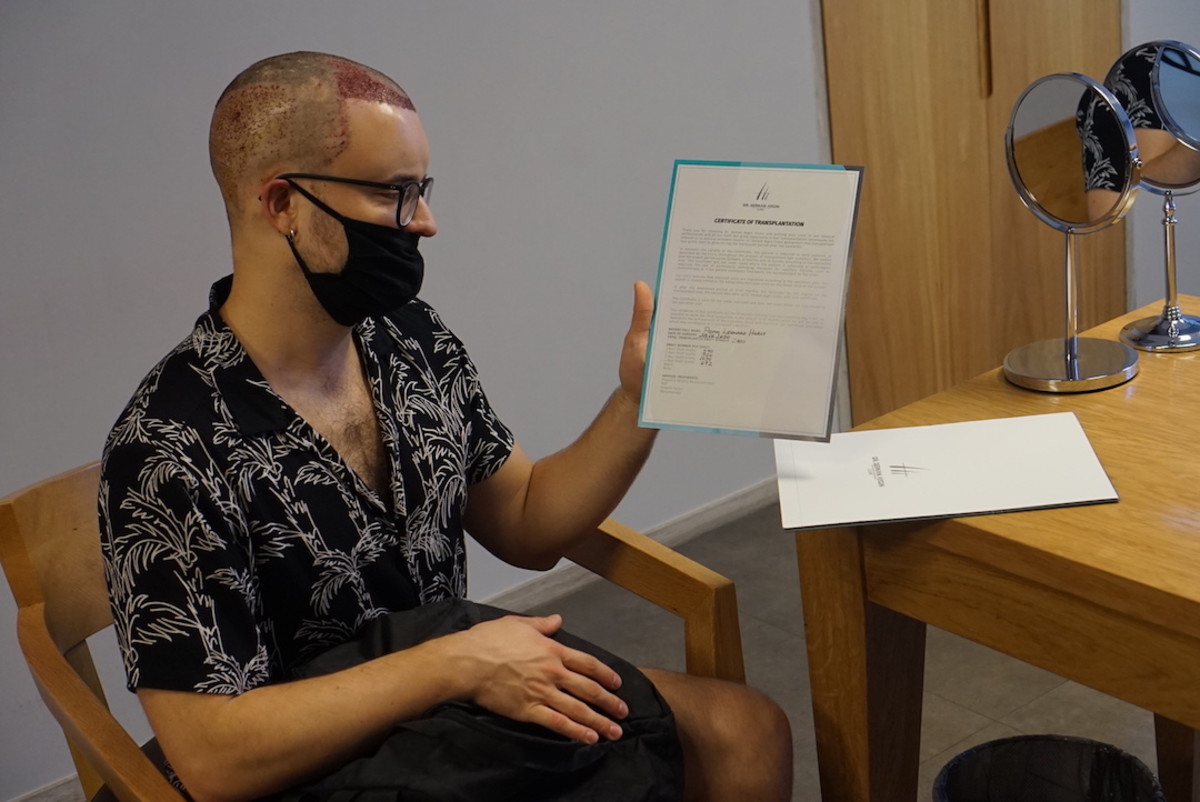
After the Hair Transplant: Recovery and Regrowth
Here’s the steady progression of the weeks and months following the transplant.
After One Week: The scabs formed over the area, and in a strange way, showcased where my new hair would grow in. You can kind of see that they even started to peel at this point—as expected. A few hairs would fall out with the scabs, but I never noticed any with follicles attached to them. These were just the early losses, also to be expected. They’ll each regrow.
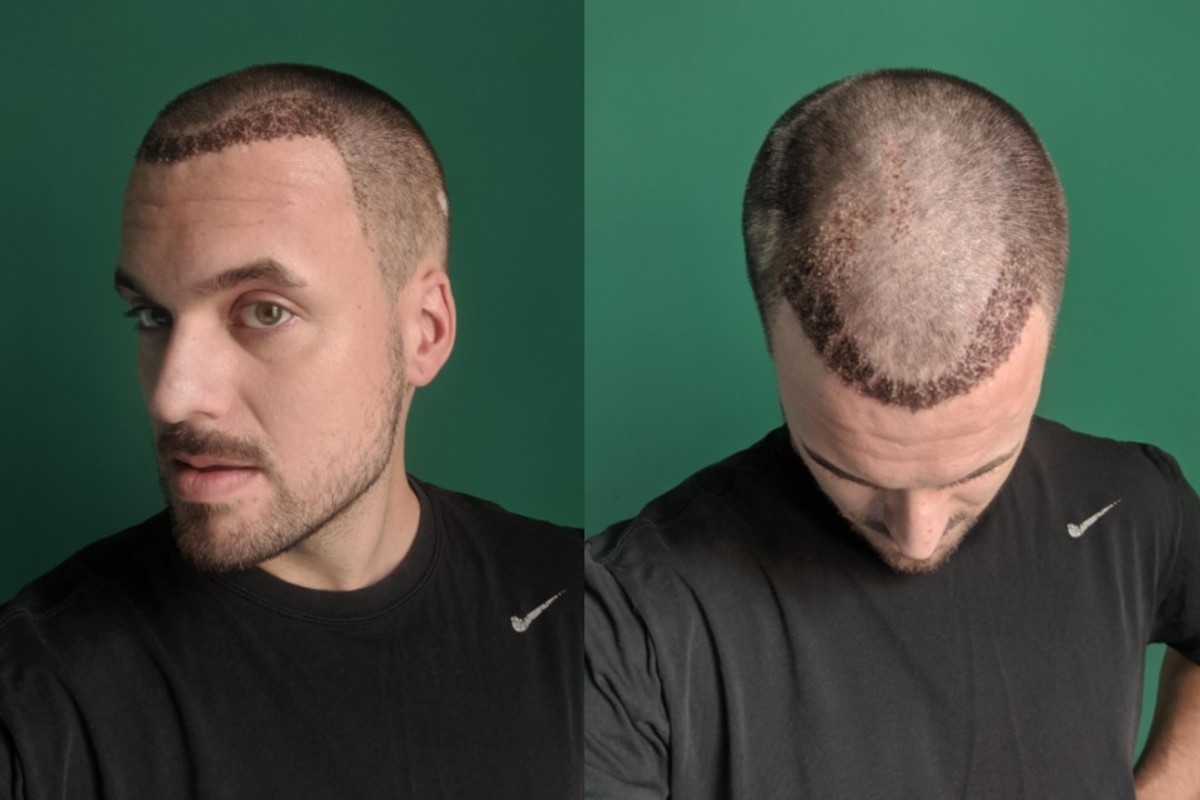
After 10 Days: The scabs were mostly off, since the daily lotion applications (lotion provided by the clinic) helped soften and heal the area. Lots of the hairs are still there, though enough have fallen that you can see some initial thinning. It’s harder for me to see the progress over the bald spots as it progresses (due to the forest of hair around them), but I was relieved to “feel” the stubbled hairs at this phase to note that they were indeed there, prior to their falling and regrowth.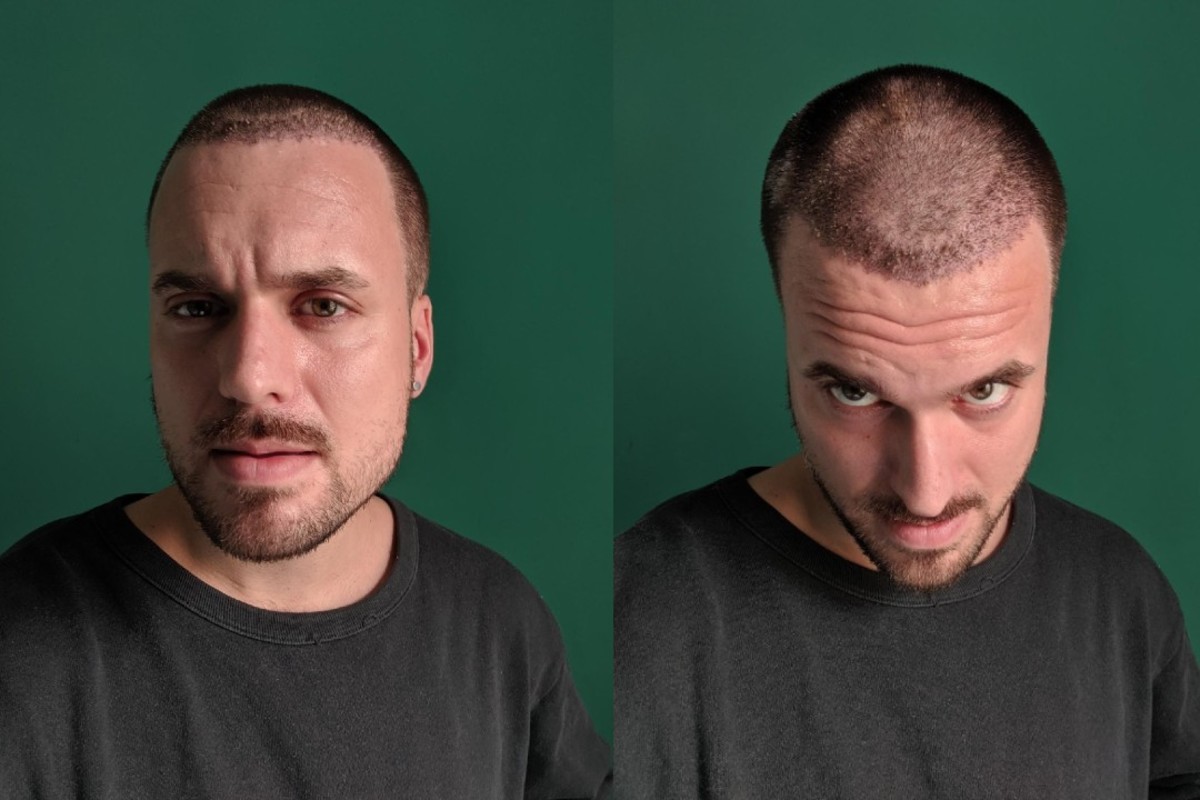
After One Month: Lots of the hairs have now fallen out. A few sturdy ones never fully fell, leaving me with a couple sprouts in the area. I shaved them down with a hair clipper, which is allowed after one month. There was still some redness and numbness on the scalp, both of which steadily lessen each day moving forward. It’s kind of weird that you can see with your eyes where the hairline is drawn, even when the hairs aren’t there. You can also see all the little holes from where the hairs are gonna sprout. It’s fascinating, however, I feel anything but cute. So, it’s HATS for me for a couple months, until my existing hair is long enough to cover the transplanted area.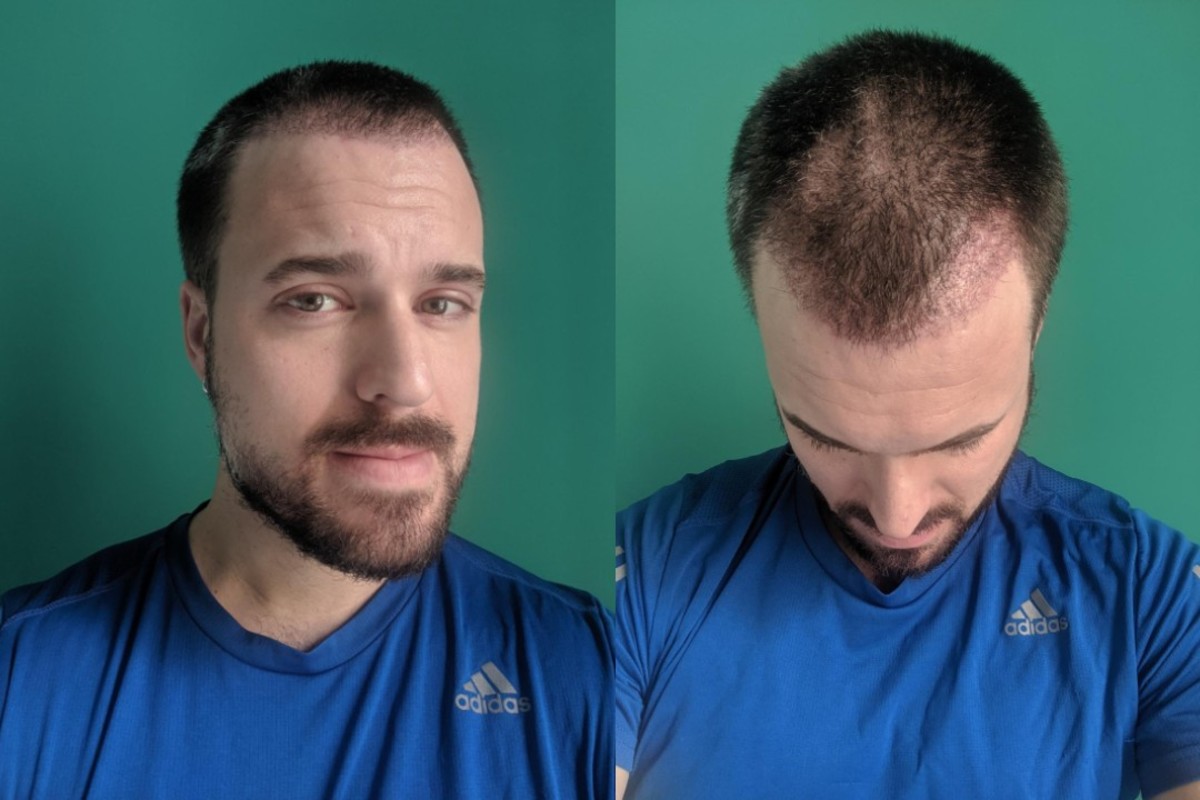
After Two Months: Here, again, you can see where the hairline will grow in. The redness and numbness are both essentially gone. (Wearing a hat too long can make the head look a little red on the transplanted spot, but it subsides quickly.) Some sprouts make appearances weekly, and I’ll continue to trim them back down until they’re in greater numbers. My head looks like a tennis ball, but it feels pointless to get a haircut since I’m wearing hats in public all the time. I think in another month or so, I’ll be able to ditch the hats and walk around in the daytime without worrying if my forehead looks funny. Most of my friends barely seem to notice it (especially the ones who didn’t know about the procedure, despite my telling the world about it). It’s mostly me fixating on it. Remember, this is a beautifully vain process.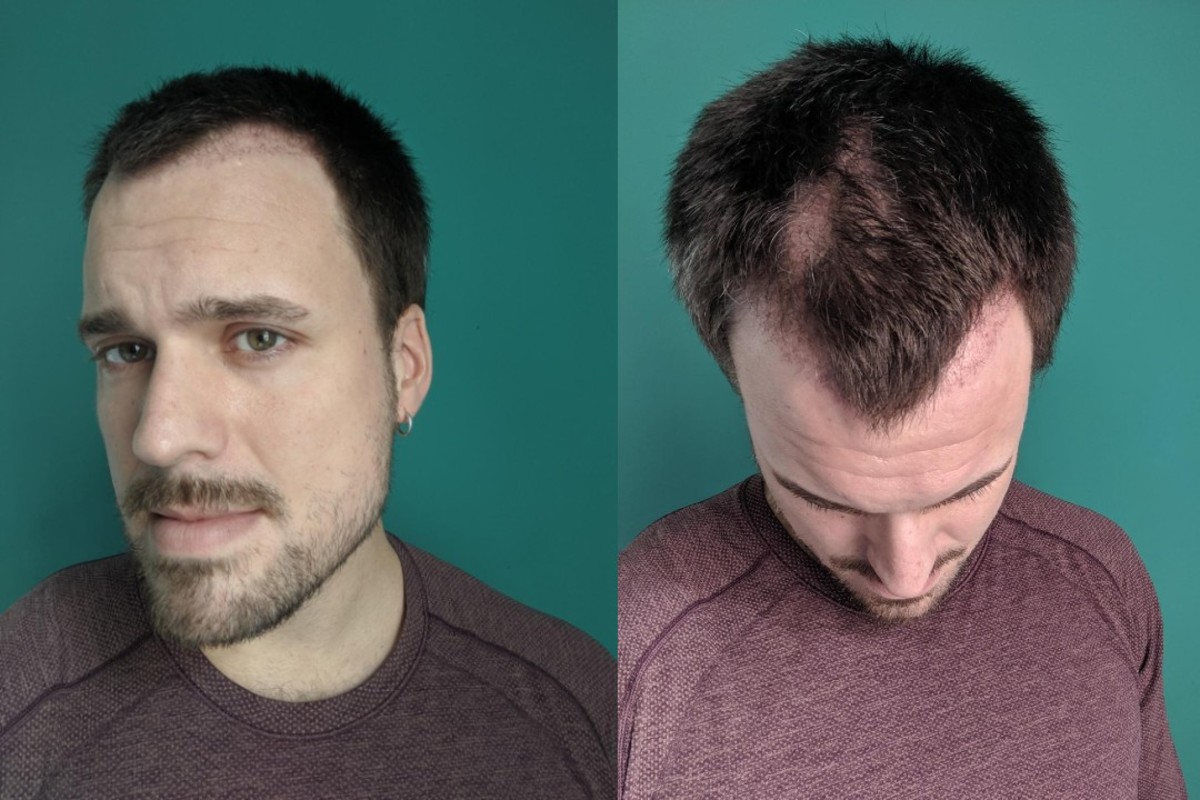
After Three Months: My “regular” hair has gotten long enough that it can nearly cover the recession if I style it forward. This is great because I’ve been buzzing the transplanted hairs down as they grow out—and they have certainly been growing out. Right now, I would say maybe half or two-fifths of the hairs are starting to peek through, and it’s only been 90 days. I’ll give them another month or so before I stop buzzing them and let them grow up, underneath my “curtains” that I’m now covering them up with. I’m just waiting for the large majority of them to sprout, and once that happens (hopefully around Month 4), I’ll let them grow to a centimeter long. Then I’ll buzz all of my hair back down to that centimeter length and should be at my ideal “starting point” for my new hairline and bald-spot cover up. As for the bald spots, I can’t really see anything because the hair around them is so long. I can only trust that they’re growing out with the same fervor as these front-facing ones. I’ll post photos of those at Month 4, too.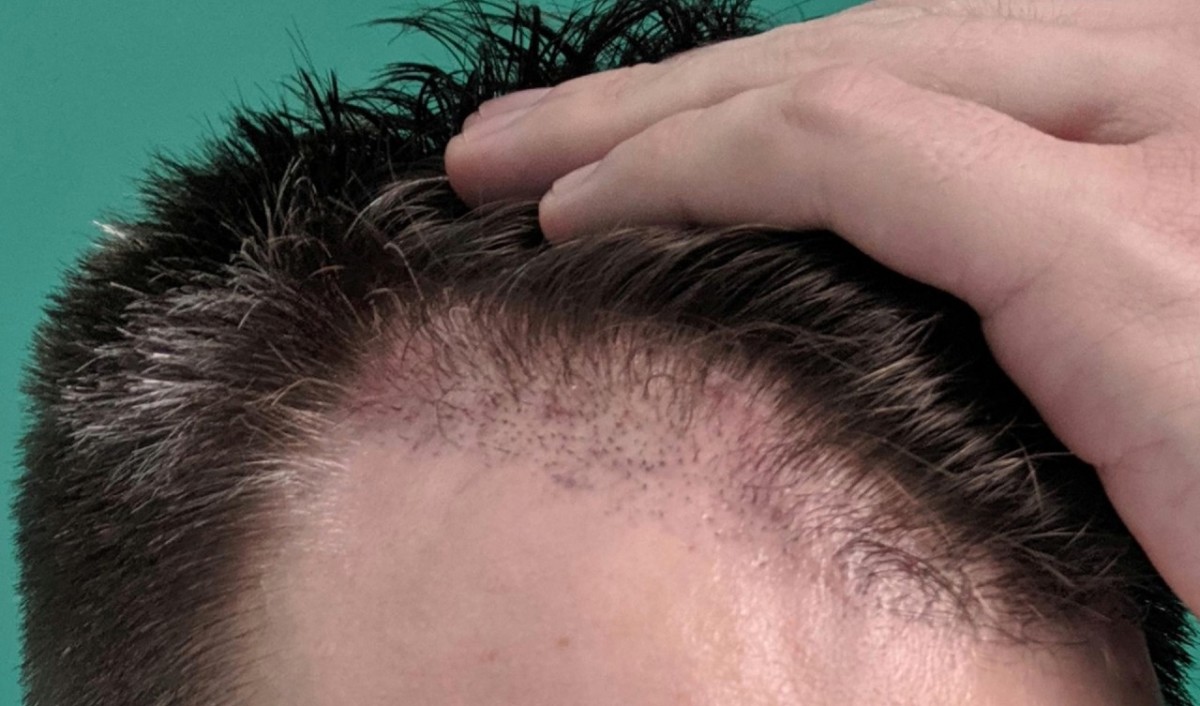
After Four Months: The hairline is really filling in and taking shape. It appears that maybe half or two-thirds of the hairs have sprouted, and I’m letting them grow out fully now, instead of trimming them (since my other hairs were long enough to cover it in front). But now, from the passing eye, it looks like I have this nifty new hairline, and it feels incredible. The most I can say right now is that I’m excited to see how this looks in yet another month or three, because the growth is happening fast. Please pardon my freshly washed, messy hair—it just makes it easier to showcase the hairline when the hair is wet.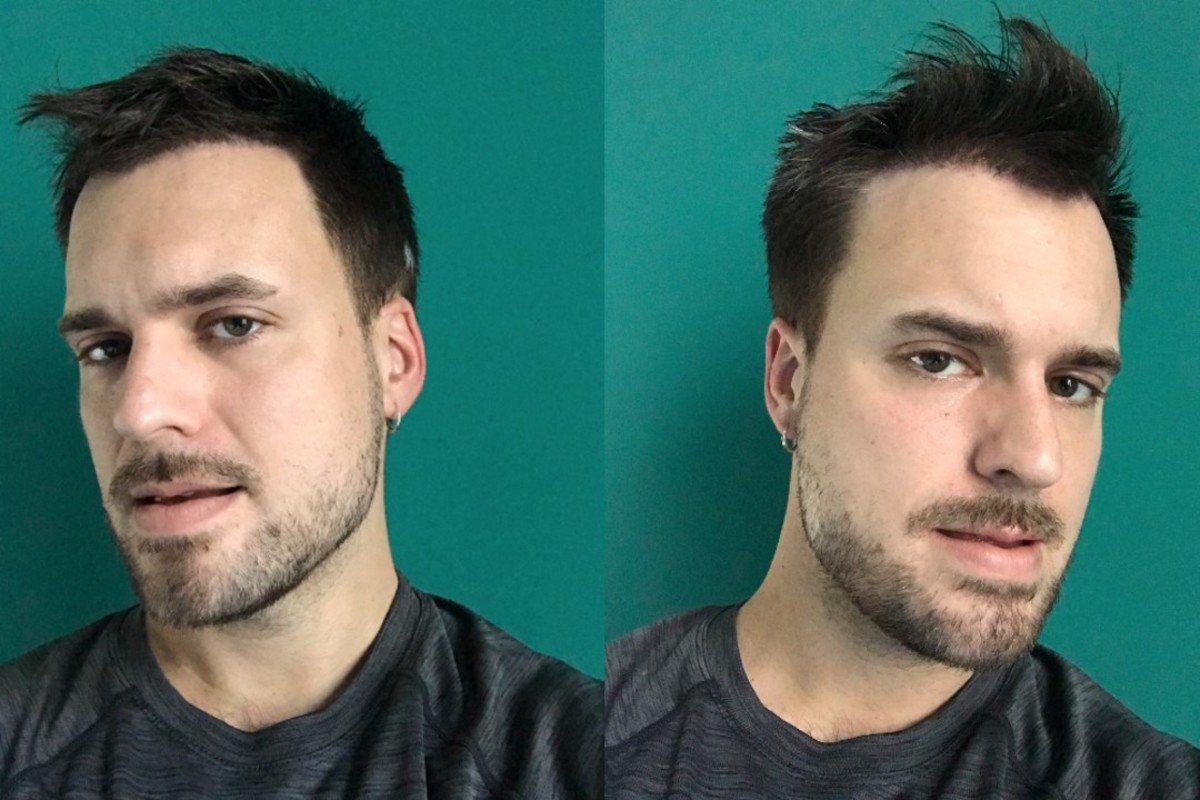
After Five Months: I’m at a strange point in the process, where progress is hard to measure. On the one hand, my hairline looks locked and loaded to the naked eye. It really looks terrific. On the other hand, imagine 7000+ hairs all growing in at once: They’re all extremely thin and need another six to eight months to become thicker, fuller, more cooperative. When you look closely at the hairs, you can see that for now they still have a life of their own, kind of springing every which way. I haven’t put much product on them (which could help control them), and I’m wearing my hair forward to still cover the area—though now even my “fringe” looks fuller than before, which I’m appreciating. Dr. Aygin’s team is happy with the progress, and says that by late spring or summer, I should be experiencing the full effects. I’ll probably space out my updates a little bit, then, since I’m only going to keep growing out my hair for a few months until I’m ready to buzz it off and show the true results of this thing. I can only do that when those hairs are thick and standing upright on their own.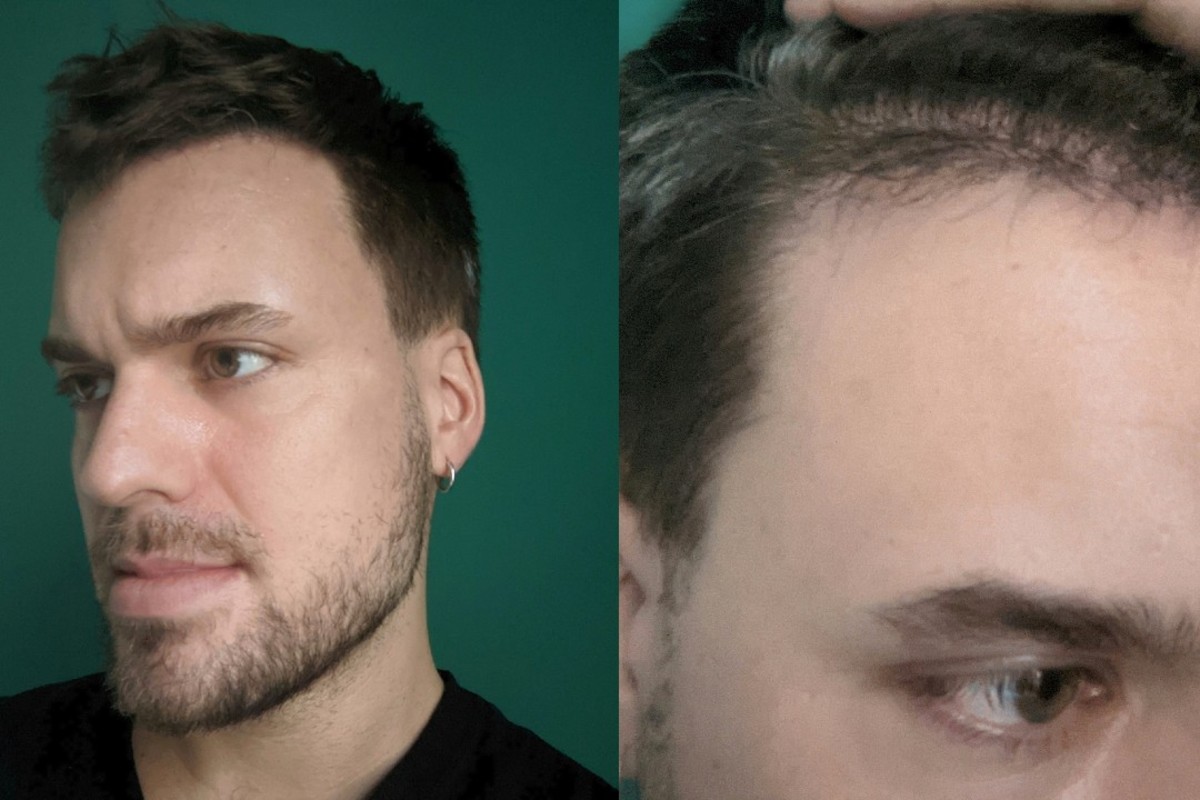
After Seven Months: I skipped the six-month update since I still wasn’t ready to buzz down my hair, and showing you the same-ish images as Month 5 would have been underwhelming. But now I’m overwhelmed, at Month 7, with how incredible this transplant looks. I buzzed it all down to see how filled in it looks, and wow, my new hairline…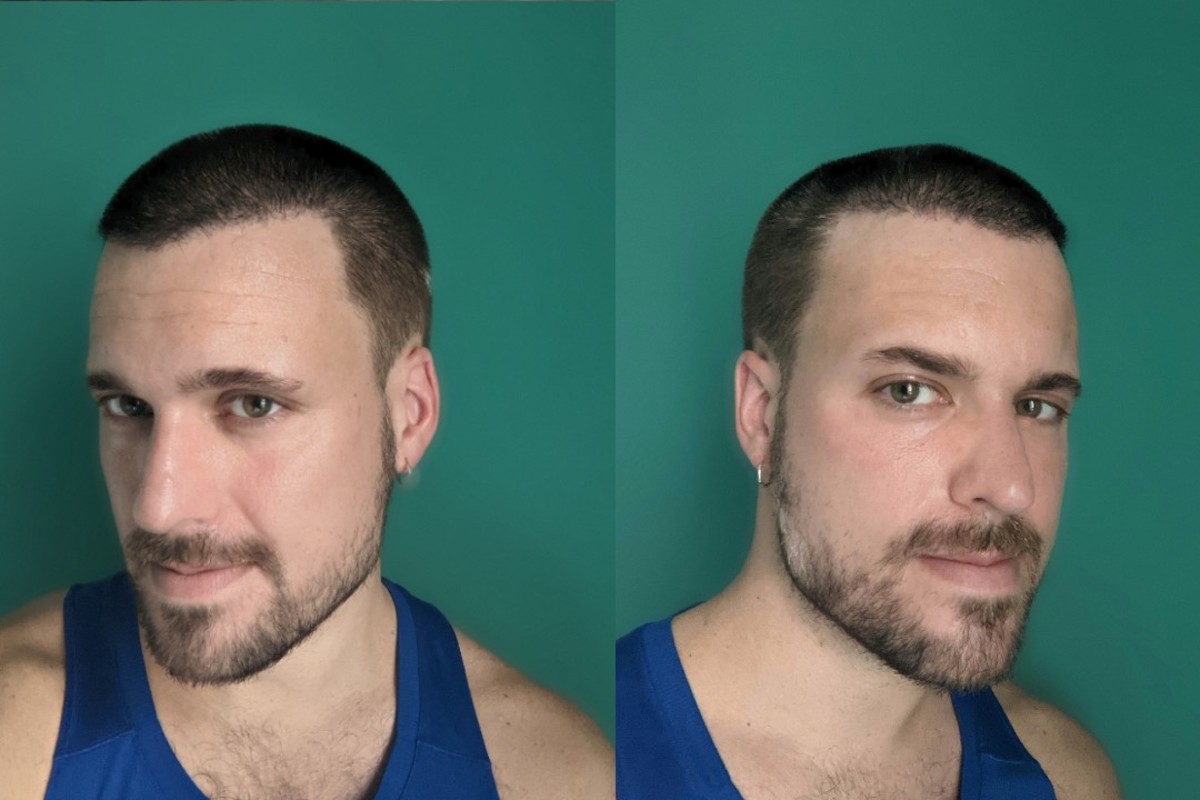
I was most impressed with how filled-in the bald spots were atop my head. Compare it again with the photo before my surgery, where they “drew” in the transplant recipient areas: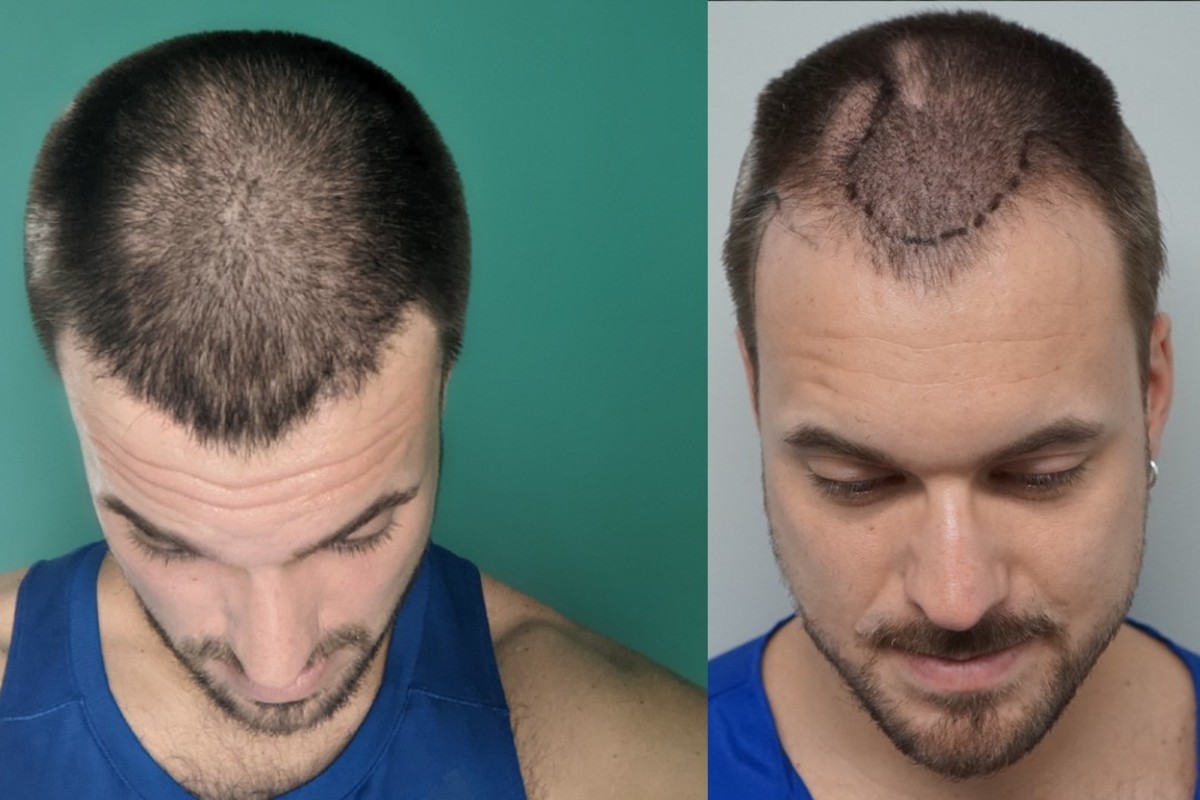
The best part is that Dr. Aygin’s team said I still have more progress to make—and that after one full year I should see the full density of the hairs. I believe it, too, because before I buzzed down, maybe 10-20 percent of the hairs still seemed especially thin and flimsy, as if they needed more time to thicken up from their initial growth spurt. The rest of the transplanted hairs felt fully thick, though—but I guess they still have a little more ripening to do, too.
Overall, I can discern with my trained eye where the transplant line is drawn in my new hair. It’s slightly thicker than my natural hair up top. But that’s only because I’m scrutinizing. It looks entirely natural, and there are no scars or a visible lack of density in the rear of my head. It looks as if nobody ever took any hairs from there (much less 3,000+ grafts and 7,000+ hairs).
I’ll probably keep it short for a while, before growing it out and really putting the new hairs to test. This buzzed look was the thing I most looked forward to with the transplant: A carefree, shaved-down cut that shows no signs of recession, nor noticeable signs of thinning at first glance.
So, if you want a good side-by-side of before and after, I think these two are good examples. The before is about 18 months prior, when I dyed my hair blond and it had grown out a few weeks. You can really see where the hairline is, and the contrast between the front wisps and the recession.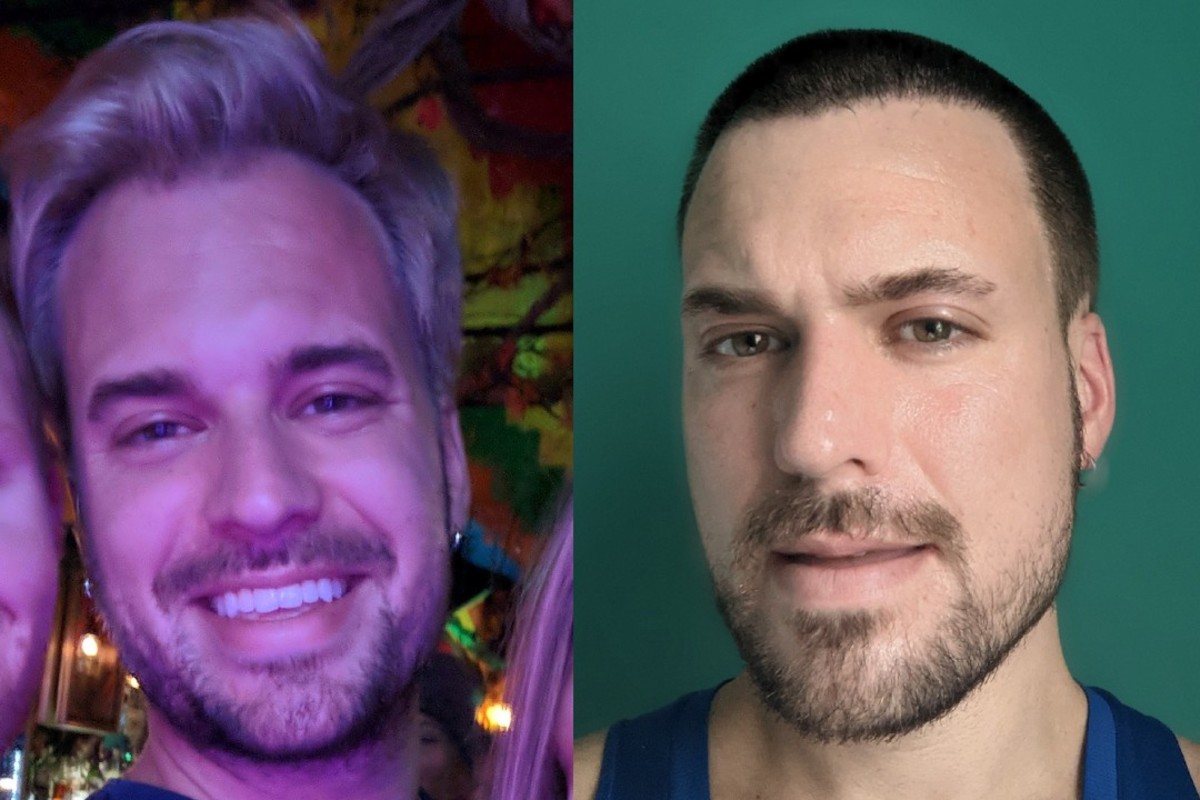
After Nine Months: I. Am. So. Happy. It’s growing in, and thick. The “new” hairs are each fuller and are far more cooperative this past month. The bald spots are filled in, thank God. The density in front matches the density in the back (after it’s grown out a centimeter or so). I am eager to get it long enough to style in different ways, but in the meantime, am so satisfied with the results. I’m confidently showing them off, too, with no shortage of accolades from my friends. And I may have already converted three or four of them on the procedure, each of whom is getting similar results along their own respective timelines.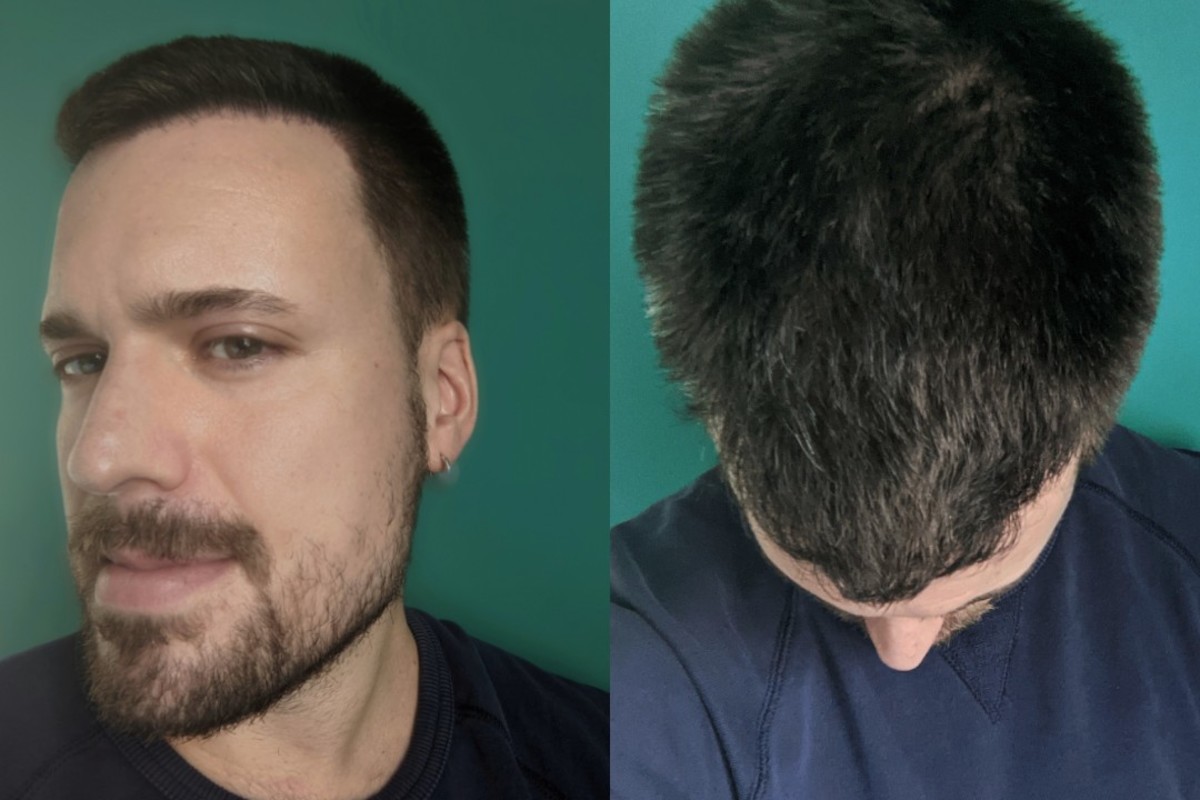 More soon: I’ll update this article with more progress photos as the hair continues to grow, well into 2021.
More soon: I’ll update this article with more progress photos as the hair continues to grow, well into 2021.
[Author Disclaimer: Please contact a board-certified dermatologist regarding your own hair loss (or a certified transplant surgeon), and to discuss your best options. I appreciate all outreach on the topic, but cannot respond with any tips nor with any advice; I myself am not a doctor, nor can I accurately assess your own unique concerns.]
For access to exclusive gear videos, celebrity interviews, and more, subscribe on YouTube!
